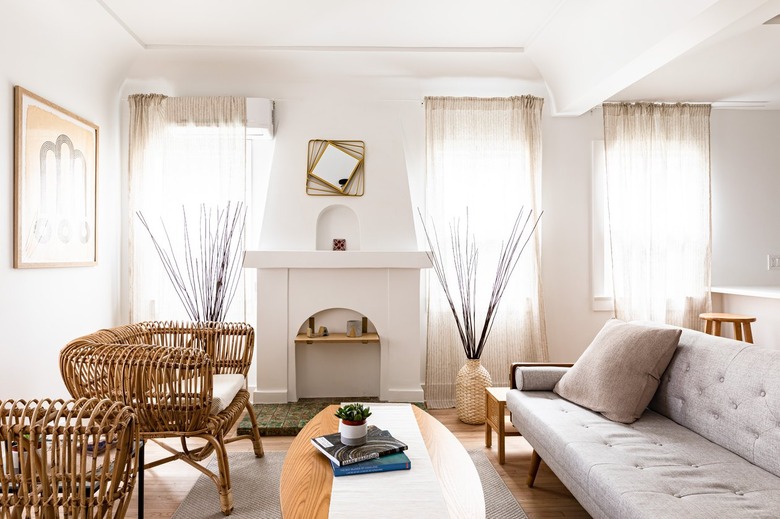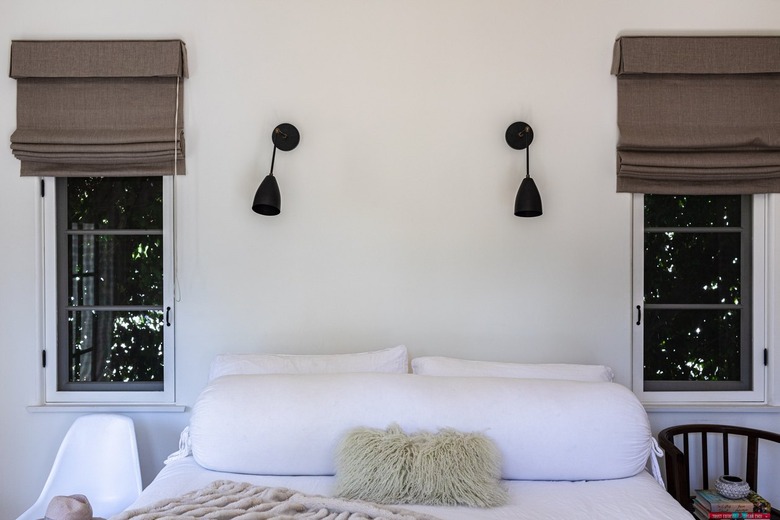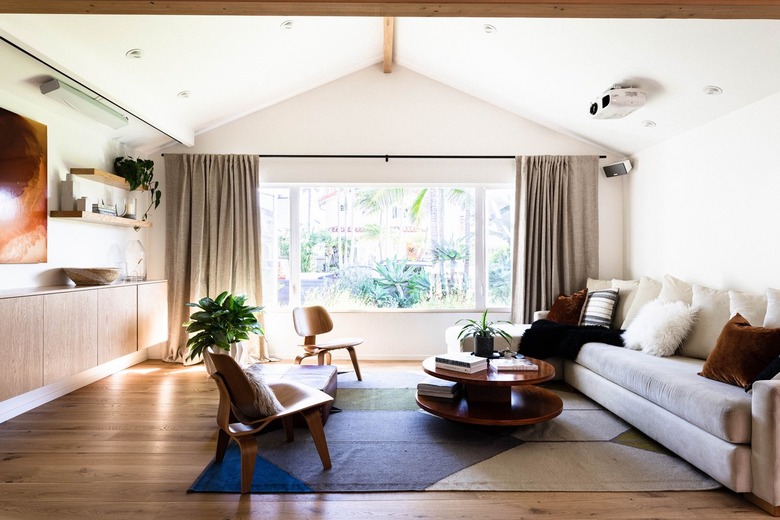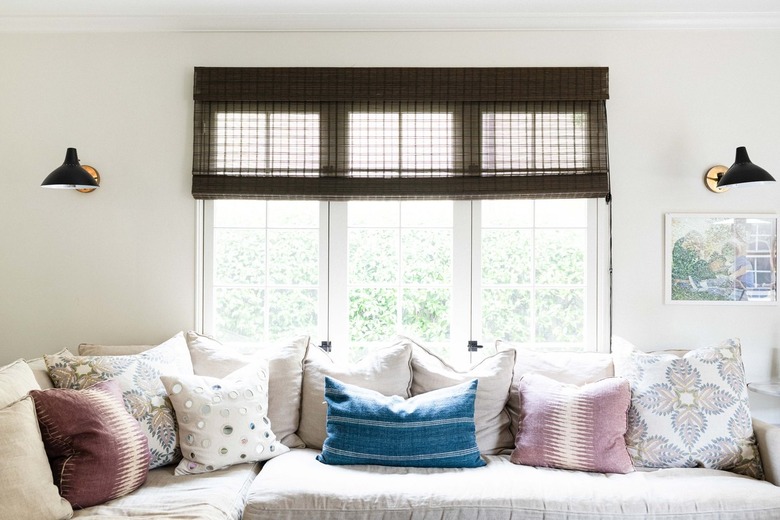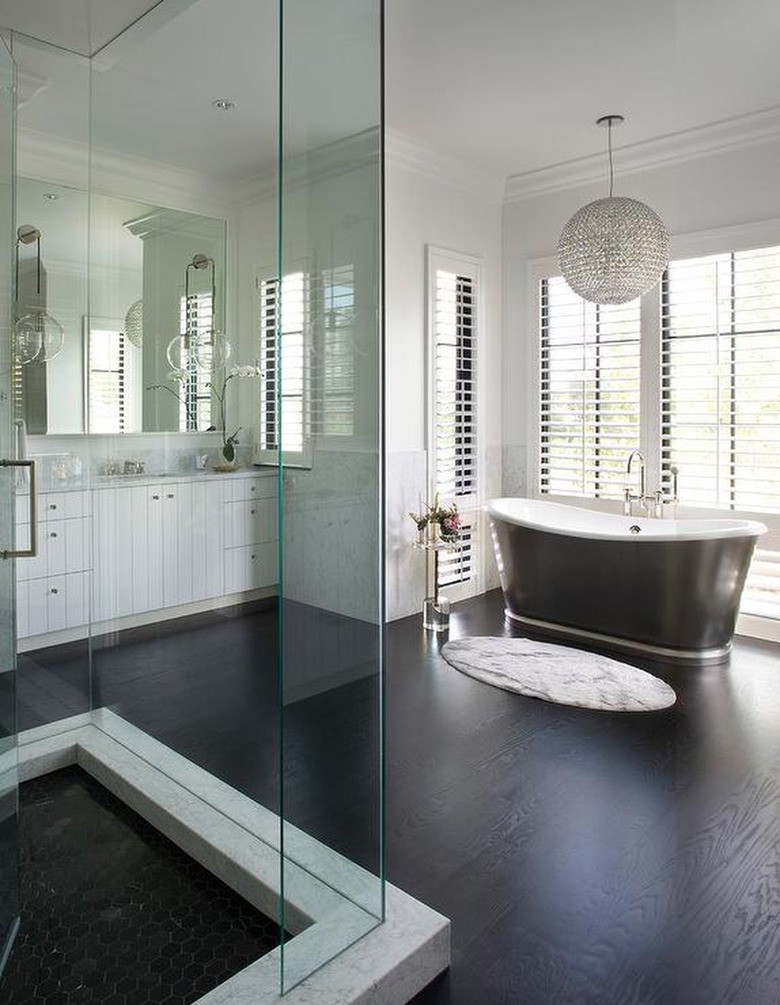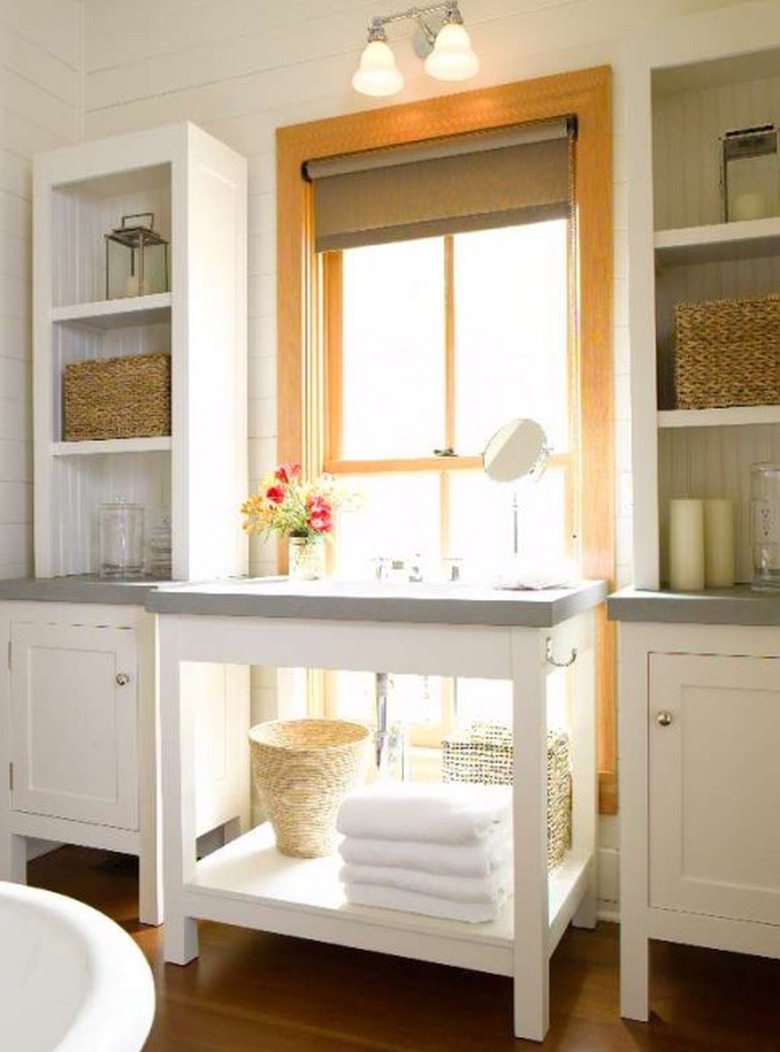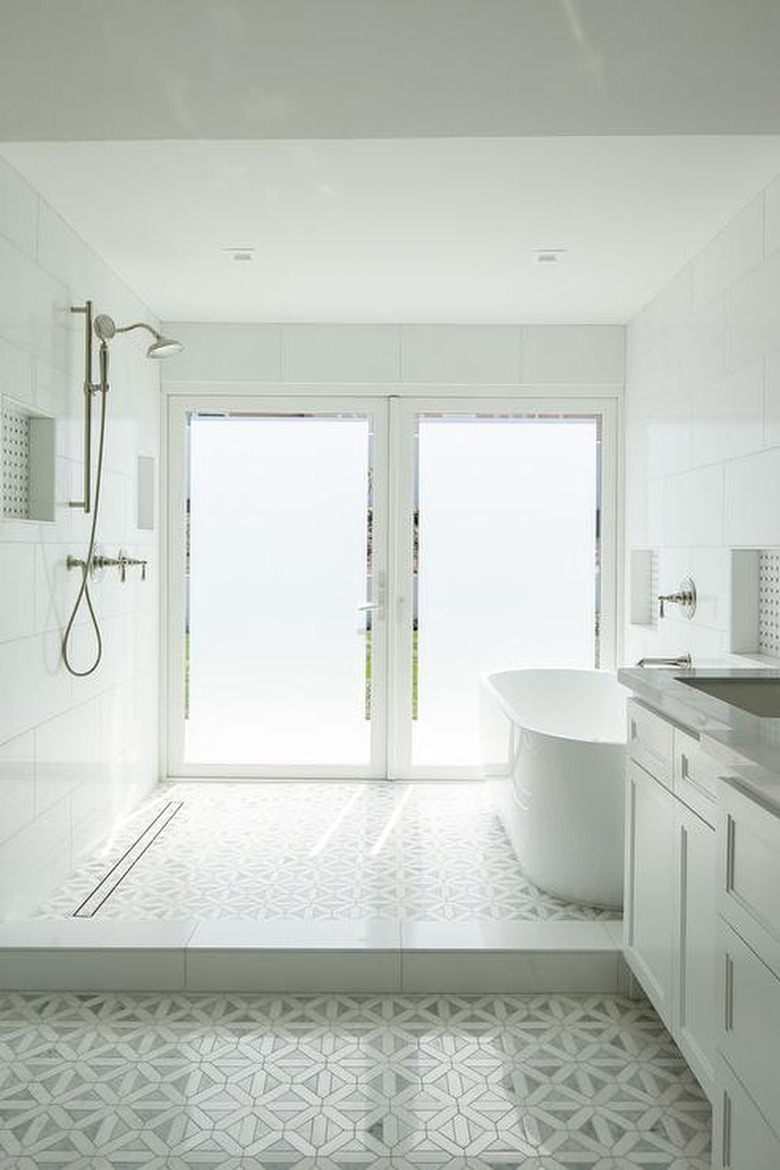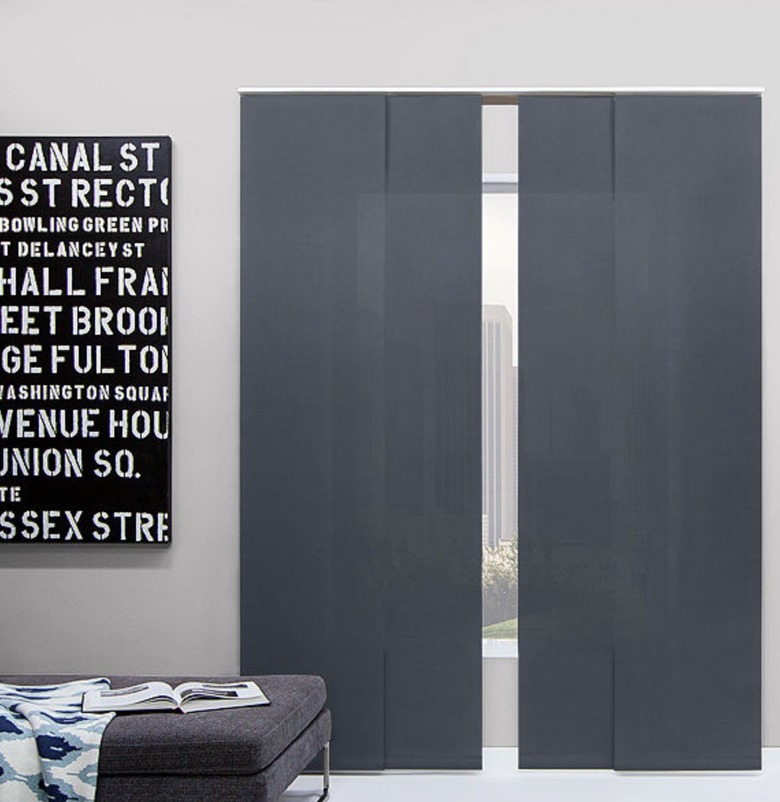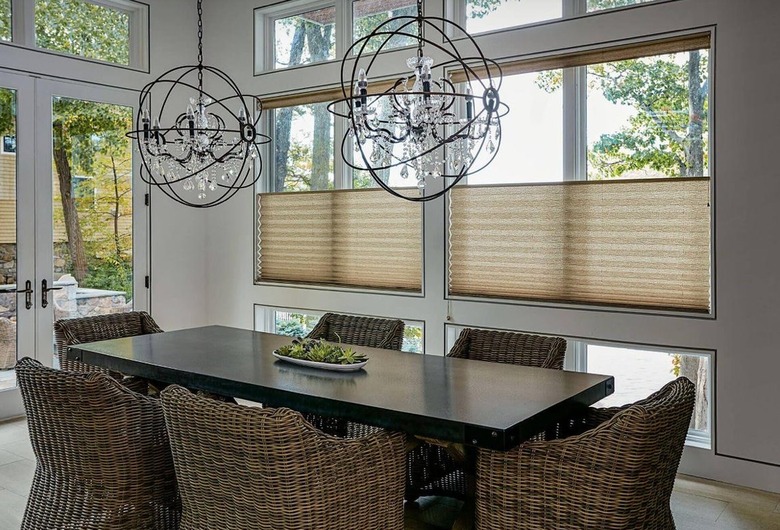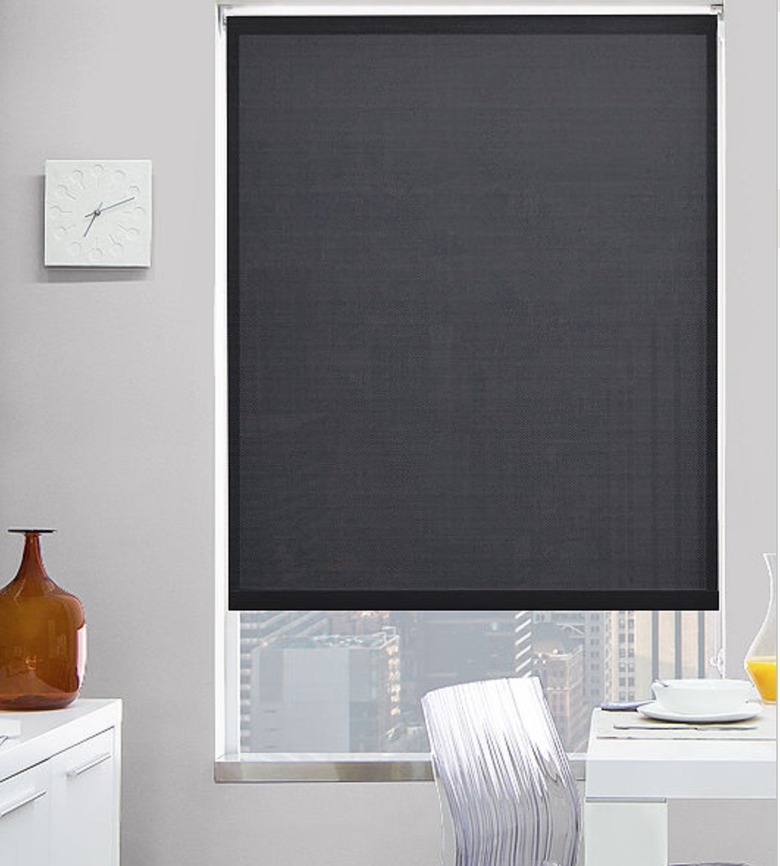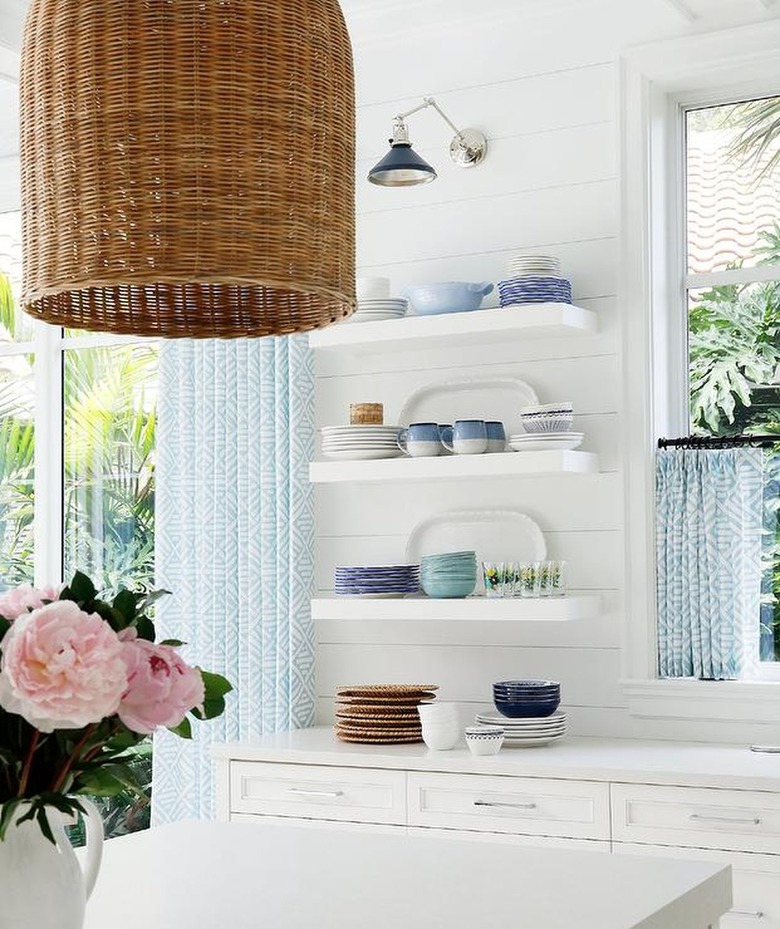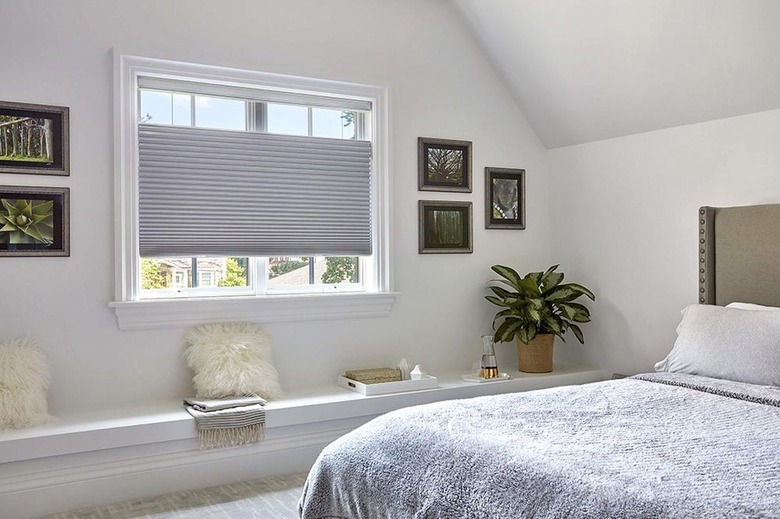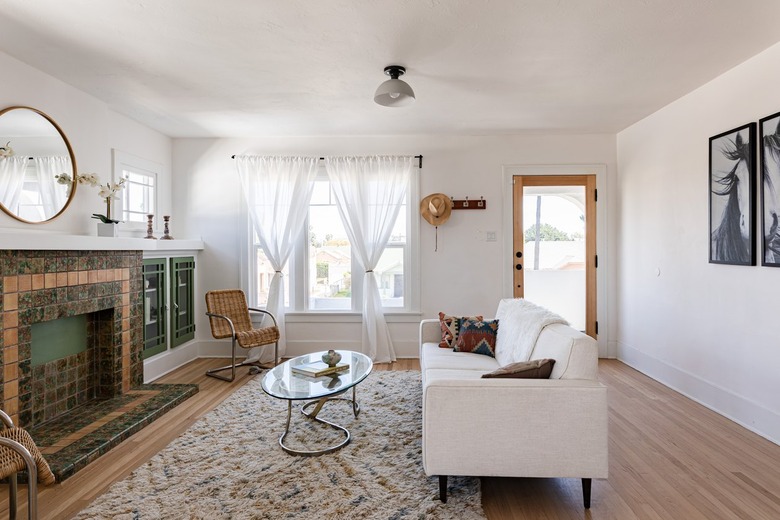Types Of Window Treatments: The Ultimate Guide For Your Windows
When it comes to window treatments, there are many styles for homeowners to choose from — drapery, Roman shades, shutters, and vertical blinds, to name a few — along with a dizzying array of fabric options including cotton, wool, velvet, and wood. While shades are generally fabricated out of a singular cut of fabric, blinds are made from harder materials and feature individual slats or louvers. All of these considerations can make deciding what to use in a home a bit overwhelming for the average person. Keep in mind that most decisions will be driven by a window's location and primary function — are you looking to completely block out light in a bedroom or just add a decorative touch to a kitchen?
Window coverings provide the final touch on most rooms and are used to punctuate a home's aesthetic. And you may not know this, but the way they're mounted can dramatically impact their effect on a room. Windows a tad narrow? Extend shades beyond the frame to make them appear wider (or to hide unsightly frames). To give the illusion of higher ceilings, install drapery a few extra inches above the window.
In an effort to give you a better understanding of the different types of window treatments, and to ensure you make the best decision for your home, we've put together the following guide chock-full of helpful information and tips.
The 13 Best Window Treatments for Your Home
1. Roman Shades
Roman shades are made up of fabric folds or pleats that stack as they're opened. They're available in a few different styles — flat Roman, relaxed Roman, and pleated Roman — all of which will add depth and an enviable finish to your windows, albeit at a high price point. While it's hard to dispute their beauty, Roman shades don't provide complete light coverage, so you'll want to measure tight to the window frame, without touching it, to block out as much light as possible. Keep in mind that the cord that's used to open and close them can be a hazard to pets and small children. Try installing them across a series of windows in your bathroom or above your kitchen sink. Just keep in mind that the fabric might take a little extra effort to keep clean.
Drapery panels come in a vast range of styles — pinch pleat, grommet, rod pocket, and more — and lengths — puddle, breaking the floor, pooling the floor, and float — that make them an incredibly versatile option. Although they're an investment, they are a no-brainer if you want to add decorative interest, drama, and most importantly, visual height to your room, since they draw the eye upward. Curtains work beautifully in living rooms, formal dining rooms, and bedrooms, in particular. Pro tip: Avoid using them in kitchens and bathrooms, where they're prone to collect dust and debris. Curtains and drapes can overpower small windows that don't have enough space to let them breathe, so for spatially challenged rooms, choose a simpler window treatment.
Constructed from wood, linen, bamboo, or jute, woven shades have a minimal appearance with the benefit of introducing warmth and subtle texture to interior spaces. Their relaxed feel is ideal for casual rooms where a small amount of light is welcome — say a breakfast nook or a family room — but might not be the preferred choice in spaces where you're looking to achieve maximum darkness, like a bedroom. They can be installed in the form of a Roman or roller shade.
Shutters are versatile, long-lasting, and available in a wide variety of styles — including accordion, half-window, and more — that can add an architectural element to your home decor. Use them in just about any space where you want to exude elegant, yet relaxed vibes. You can even style them with or without drapery panels, depending on your space. Andrea Schumacher opted for a wall of floor-to-ceiling shutters in this elegant black-and-white bathroom, which keeps the overall look elevated yet approachable. Unlike shades that can be raised and virtually disappear, shutters are always highly visible, even when they're open. Keep in mind that they can be a bit cumbersome to open, and furniture placement — which can hinder their movement — needs to be considered.
Sheer shades or curtains are simple, understated, and well-loved for the light and airy feel they bring to interiors. They're ideal for spaces where you want to let a lot of natural light in, like kitchens or an office, while still maintaining an element of privacy. But they aren't fit for rooms that require more coverage, like a nursery or a bedroom. If you love the ethereal look of sheers, but long for more light control, pair them with opaque drapery panels for a layered solution.
Horizontal, or Venetian blinds, are made of stacked slats attached by customizable "ladder tape" that runs from top to bottom. They're one of the more popular styles of window covering thanks to their affordability and ability to control light. This option tends to work best in an area where you aren't using window treatments to make a visual statement — like in an office, bathroom, or bonus room. They can be a challenge to clean, and don't completely block out the light.
Roller shades are a hardworking option ideal for small spaces that might be overwhelmed by a voluminous window treatment, like this charming bath by Hoedemaker Pfeiffer. They also work well as a visual respite in a busy room where the eyes might need a break. Roller shades are easy to install and operate — just tug at the bottom of the shade to pull it down or roll it up. While they can be customized to fit awkwardly sized windows and upgraded to include decorative trim and pulls, the functional and streamlined design might not mesh well with the aesthetic of your home.
For spaces where a traditional window treatment just won't do — or where you want to keep your window style especially minimal — consider a window film or frosted glass treatment. It adds much-needed privacy while still allowing the light to flow in, and, depending on how it's applied, it can add a bit of visual interest, too. This elegant bathroom by AGK Design Studio maintains a bright and light-filled ambiance, as well as much-needed privacy, thanks to the frosted glass paneled patio doors.
Inspired by Japanese Shoji screens, panel track blinds, also called sliding panels, are installed on a track (naturally), enabling them to be moved back and forth easily. They are a great option for big picture windows or glass patio doors — anywhere you have a large space to cover, but need a degree of flexibility. The sleek-looking panels can be arranged side-by-side, fully covering windows or doors, or pushed to the side to allow for more light or access. Keep in mind that these are best reserved for oversize windows — using them on smaller apertures won't really work. And bonus: Their large size and simple construction make them easy to clean with a hand-held vacuum.
Pleated shades are made from a single layer of material, and although they're also called pleated blinds, they actually don't have slats. They look similar to honeycomb cellular shades but don't provide the same level of insulation. These are a wallet-friendly option, and the small stack height enables full light exposure when opened. However, they provide less light control and privacy and can be a challenge to clean.
A type of roller shade, the primary purpose of solar shades is to protect you and your home from exposure to UV rays by using a material that diffuses sunlight and blocks heat. They help maintain a comfortable temperature in your home with the added benefits of lower utility bills and reduced glare on television and computer screens. Even though solar shades are available in solid and patterned options and they do an excellent job of filtering out UV rays, they aren't great at blocking ambient light, and at night, they don't offer much privacy.
Technically not a shade, cafe curtains cover the lower half of a window, allowing ample natural light to filter into spaces with a hint of privacy. They're ideal for spaces that don't receive direct sunlight or need a lot of coverage, say the bathroom or kitchen. For example, in this coastal-inspired cook space by Kara Miller, the charming idea is employed at the window behind the sink, showcasing a subtle blue and white motif that fits in seamlessly with the rest of the decor.
Cellular shades have a honeycomb-shaped design (hence why they're also referred to as honeycomb shades) with superior insulation capabilities that capture the air, keep heat out in the summer, and retain it in the winter, making them incredibly energy efficient. They are available as light-filtering or blackout shades and their slim profile makes it easy to include a layer of drapes over them without the addition of unwanted bulk. But it's not all good news — these benefits come at a higher price point than other window covering options.
Tips for Choosing the Right Window Treatments
The type of window treatments you select will depend upon location, desired function, and the overall aesthetic you want to achieve. Rooms where complete darkness is the goal — home theaters, nurseries, and bedrooms — will require drapes made from fabric with a tight weave that can block out light, such as velvet, wool, and cotton. This will also help keep the heat and cold out as well. Measure your windows carefully to ensure a proper fit and to minimize light leakage; a good way to accomplish this is by making sure the drapes are wider and higher than the windows when they're closed. Drapery panels will impart a sense of formality, sophistication, and movement to any space.
Sheer fabrics, like lace and voile, for example, allow light to filter in while still providing a degree of privacy. If you love the look of sheers, but long for more coverage, they can be paired with either woven shades or heavier drapes for a welcome layered look.
Interior shutters and woven shades are less formal, thanks to their warmth and earthiness. They're best reserved for spaces where a bit of light seepage is okay, or even desired, such as home offices, dining rooms, and family rooms. Shutters can be measured to fit inside the window frame (fittingly called an inside mount) or beyond the frame, also known as an outside mount.
If you want the flexibility of allowing a measured dose of light to flow in, vertical blinds would be ideal. They're a handsome choice for use in a study or home office, and for certain architectural features, such as dormer windows or slanted ceilings, that inhibit the use of curtain rods. Like shades, blinds can be mounted inside or outside of the window frame.
